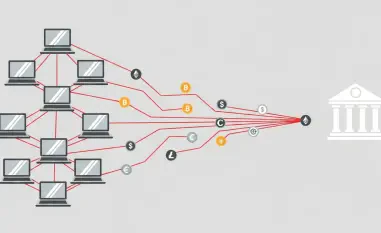In an era where cyber threats loom larger than ever, ransomware stands out as a particularly insidious danger, encrypting critical data or locking systems until a hefty ransom—often demanded in cryptocurrency—is paid, leaving organizations and individuals grappling with severe financial and operational fallout. This destructive malware has evolved into a sophisticated weapon, with attackers now employing tactics like double extortion, where they not only encrypt files but also steal sensitive information and threaten to leak it publicly if their demands aren’t met. The consequences can be catastrophic, disrupting business operations, draining resources, and shattering reputations in a matter of hours. As these attacks grow in complexity and frequency, the urgency for effective, accessible defense mechanisms has reached a critical peak. Amid this challenging landscape, Wazuh, a free and open-source security platform, emerges as a formidable ally, combining Extended Detection and Response (XDR) and Security Information and Event Management (SIEM) capabilities to combat ransomware threats. This article delves into the intricate nature of ransomware, its devastating impacts, and the multi-layered strategies required to counter it, while spotlighting how Wazuh offers a cost-effective, powerful solution. By exploring real-world applications and technical strengths, the discussion aims to illuminate a path forward for organizations seeking to safeguard their digital assets against this relentless cyber menace.
Unraveling the Complex Nature of Ransomware
Ransomware represents a malicious form of software designed to infiltrate systems, encrypt valuable files, or block access entirely, holding data hostage until a ransom is paid, often through untraceable channels like Bitcoin. Over time, this threat has transformed from rudimentary encryption schemes to highly advanced attacks incorporating double extortion tactics, where attackers exfiltrate data before encryption and threaten to publish it if payment isn’t received. Such strategies amplify the pressure on victims, especially businesses handling sensitive client information. The proliferation of Ransomware-as-a-Service (RaaS) models has further democratized these attacks, enabling even novice cybercriminals to launch sophisticated campaigns by renting pre-built malware kits. Delivery methods are equally diverse, exploiting vulnerabilities through phishing emails, malicious downloads, compromised Remote Desktop Protocol (RDP) connections, and even supply chain breaches. This adaptability underscores the challenge of staying ahead of ransomware, as attackers continuously refine their approaches to exploit both technological weaknesses and human error, making it a persistent and evolving threat to global cybersecurity.
The pervasive nature of ransomware lies in its ability to target a wide range of victims, from individual users to large enterprises, healthcare facilities, and government institutions, often with devastating speed. Once inside a network, ransomware can spread laterally, infecting multiple systems and targeting critical infrastructure, rendering entire operations inoperable. Social engineering plays a significant role in its success, with attackers crafting convincing phishing emails or fake updates to trick unsuspecting users into granting access. This combination of technical exploitation and psychological manipulation makes ransomware particularly difficult to predict and prevent. High-profile incidents have demonstrated how a single breach can disrupt essential services, such as patient care in hospitals or financial transactions in banking sectors, highlighting the broader societal implications. As these threats continue to evolve, understanding their mechanisms and entry points becomes the foundation for developing robust defenses capable of mitigating their impact before they escalate into full-blown crises.
Assessing the Far-Reaching Consequences of Ransomware
When ransomware strikes, the financial implications are often immediate and staggering, with attackers demanding payments ranging from thousands to millions of dollars, depending on the scale of the target and the perceived value of the encrypted data. Beyond the ransom itself, organizations must contend with substantial costs related to incident response, system restoration, and potential regulatory penalties for data breaches. For small and medium-sized enterprises, these expenses can be existential, pushing some to the brink of closure. Even if the ransom is paid, there’s no guarantee of receiving decryption keys, and the indirect costs—such as lost productivity during downtime—often surpass the initial demand. This economic burden underscores the importance of proactive measures over reactive solutions, as the price of recovery can quickly spiral out of control, draining resources that could have been invested in prevention or growth.
Operationally, ransomware inflicts chaos by denying access to critical systems and data, effectively halting business processes and causing downtime that can persist for weeks or even months. Industries reliant on real-time data, such as healthcare or logistics, face particularly severe disruptions, with delays in patient treatment or supply chain operations leading to cascading effects. The effort to rebuild and restore systems post-attack requires significant time and technical expertise, diverting focus from core activities. In some cases, organizations may never fully recover lost data, especially if backups are inadequate or also compromised during the attack. This operational paralysis not only affects internal functions but also impacts customers and partners who depend on uninterrupted services, amplifying the overall damage and complicating recovery efforts in a highly interconnected digital ecosystem.
Reputationally, the fallout from a ransomware attack can be as crippling as the financial and operational toll, as news of a data breach often erodes public trust in an organization’s ability to protect sensitive information. Customers may seek alternatives, fearing for the security of their personal or financial details, while business partners might reconsider collaborations due to perceived vulnerabilities. Rebuilding a tarnished brand image requires considerable effort and investment, often spanning years, as stakeholders remain wary of repeated incidents. In competitive markets, this loss of confidence can cede ground to rivals, creating long-term strategic disadvantages. The reputational damage serves as a stark reminder that cybersecurity is not just a technical concern but a core component of maintaining credibility and sustaining relationships in today’s trust-driven economy, pushing organizations to prioritize robust defenses to safeguard their standing.
Crafting a Comprehensive Defense Against Ransomware
Combating ransomware demands a multi-layered strategy that integrates advanced technology, sound organizational policies, and ongoing user education to address the diverse vectors through which attacks occur. On the technical front, continuous monitoring through SIEM and XDR platforms plays a pivotal role in identifying suspicious activities early, allowing for swift intervention. Tools like file integrity monitoring (FIM) track unauthorized changes to critical files, while network traffic analysis helps detect anomalous patterns indicative of ransomware communication with command-and-control servers. Regular offline backups, kept isolated from primary networks, provide a safety net for data recovery without succumbing to ransom demands. Additionally, practices such as timely patch management to close software vulnerabilities, network segmentation to limit lateral spread, and email filtering to block phishing attempts form essential layers of protection. These combined technical safeguards create a fortified barrier, significantly reducing the likelihood of a successful breach.
Beyond technology, organizational policies must reinforce security by establishing clear protocols and fostering a culture of vigilance across all levels. Security awareness training is indispensable, equipping employees with the knowledge to recognize phishing emails, suspicious links, or other social engineering tactics that often serve as ransomware entry points. Incident response plans, tested regularly through simulations, ensure that teams can act decisively when an attack occurs, minimizing damage and downtime. Conducting periodic security audits helps identify gaps in defenses, while vendor risk management addresses potential weaknesses introduced by third-party partners. Implementing strict access controls, such as multi-factor authentication (MFA) and application whitelisting, further restricts unauthorized access to systems. By embedding these practices into daily operations, organizations can transform their workforce into an active line of defense, complementing technical measures with human preparedness to tackle evolving threats.
Harnessing Wazuh for Robust Ransomware Protection
Wazuh stands as a transformative force in ransomware defense, delivering a unified XDR and SIEM platform that is both free and open-source, making enterprise-grade security accessible to organizations regardless of budget constraints. Its comprehensive suite of features includes threat detection through malware and vulnerability scanning, which proactively identifies system weaknesses that could be exploited by attackers. Log data analysis aggregates and scrutinizes security events across endpoints and servers, pinpointing ransomware indicators like unusual file access or network activity. Security configuration monitoring ensures systems adhere to best practices, reducing misconfigurations that might serve as entry points. Additionally, Wazuh’s file integrity monitoring capability tracks changes to critical directories, flagging potential encryption activities in real time. These tools collectively empower organizations to detect threats at their earliest stages, providing a critical window to act before ransomware inflicts irreversible harm.
Equally impressive is Wazuh’s capacity for incident response, which automates active measures to contain threats as soon as they are detected, such as isolating compromised systems or deleting malicious files to prevent further spread. Integration with external solutions like YARA for custom signature-based scanning and VirusTotal for real-time threat intelligence enhances its ability to neutralize sophisticated ransomware variants. This adaptability ensures that defenses remain relevant against emerging attack patterns. Furthermore, Wazuh supports regulatory compliance with standards like GDPR and HIPAA, indirectly strengthening ransomware protection by enforcing stringent data security protocols. Its open-source framework fosters community collaboration and customization, allowing tailored solutions without the high costs of proprietary alternatives. For many, this platform represents a strategic asset, blending affordability with cutting-edge functionality to fortify cybersecurity postures effectively.
Demonstrating Wazuh’s Effectiveness in Real Scenarios
Wazuh’s practical value comes to life in its application against specific ransomware strains, such as DOGE Big Balls, a modified variant that targets enterprises through phishing and unpatched vulnerabilities. By deploying custom threat detection rules, the platform identifies early signs of reconnaissance, such as commands probing system information, and flags the creation of ransom notes like “readme.txt” across directories. These indicators of compromise trigger alerts at varying severity levels, ensuring security teams are promptly informed of potential risks. Wazuh’s file integrity monitoring, when combined with YARA scans, automates the deletion of malicious files detected in high-risk folders, logging each action for audit purposes. This rapid, automated response minimizes the need for manual intervention, shrinking the window during which attackers can cause damage. Such precision in detecting and neutralizing threats illustrates how Wazuh can be a critical shield for organizations facing aggressive ransomware campaigns.
Another compelling example is Wazuh’s response to Gunra ransomware, which employs double extortion by encrypting files with extensions like “.ENCRT” and exfiltrating data for additional leverage. The platform’s detection rules pinpoint key behaviors, including the creation of ransom notes like “R3ADM3.txt,” attempts to disable system backups by tampering with the Volume Shadow Copy Service (VSS), and suspicious network activity via modules like “urlmon.dll.” Integration with VirusTotal enables real-time scanning of files in monitored directories, automatically removing threats while providing detailed alerts on response outcomes. For Windows environments, Wazuh’s use of VSS to create pre-encryption snapshots offers a recovery mechanism, restoring data without engaging with attackers. These case studies highlight the platform’s versatility in addressing diverse ransomware tactics, proving its worth as a dynamic tool in real-world cybersecurity challenges.
Fortifying Resilience with Strategic Solutions
Reflecting on the battle against ransomware, it’s evident that past efforts revealed the critical necessity of proactive, multi-layered defenses over reactive measures like ransom payment, which offered no assurance of data recovery and often emboldened further attacks. Wazuh proved to be a cornerstone in these efforts, delivering robust protection through early detection, automated responses, and seamless integration with complementary tools. Its open-source model demonstrated that powerful cybersecurity could be accessible, leveling the playing field for organizations constrained by budget limitations. The detailed case studies of DOGE Big Balls and Gunra ransomware showcased how tailored detection and rapid containment minimized damage, setting a benchmark for effective response. Moving forward, organizations should prioritize integrating solutions like Wazuh into their security frameworks, focusing on continuous system monitoring and vulnerability management to preempt threats. Investing in regular employee training and robust backup strategies will further enhance resilience, ensuring readiness for evolving attack vectors. By adopting such comprehensive approaches, businesses can navigate the complex threat landscape with greater confidence, protecting their data and operations from the relentless scourge of ransomware.













